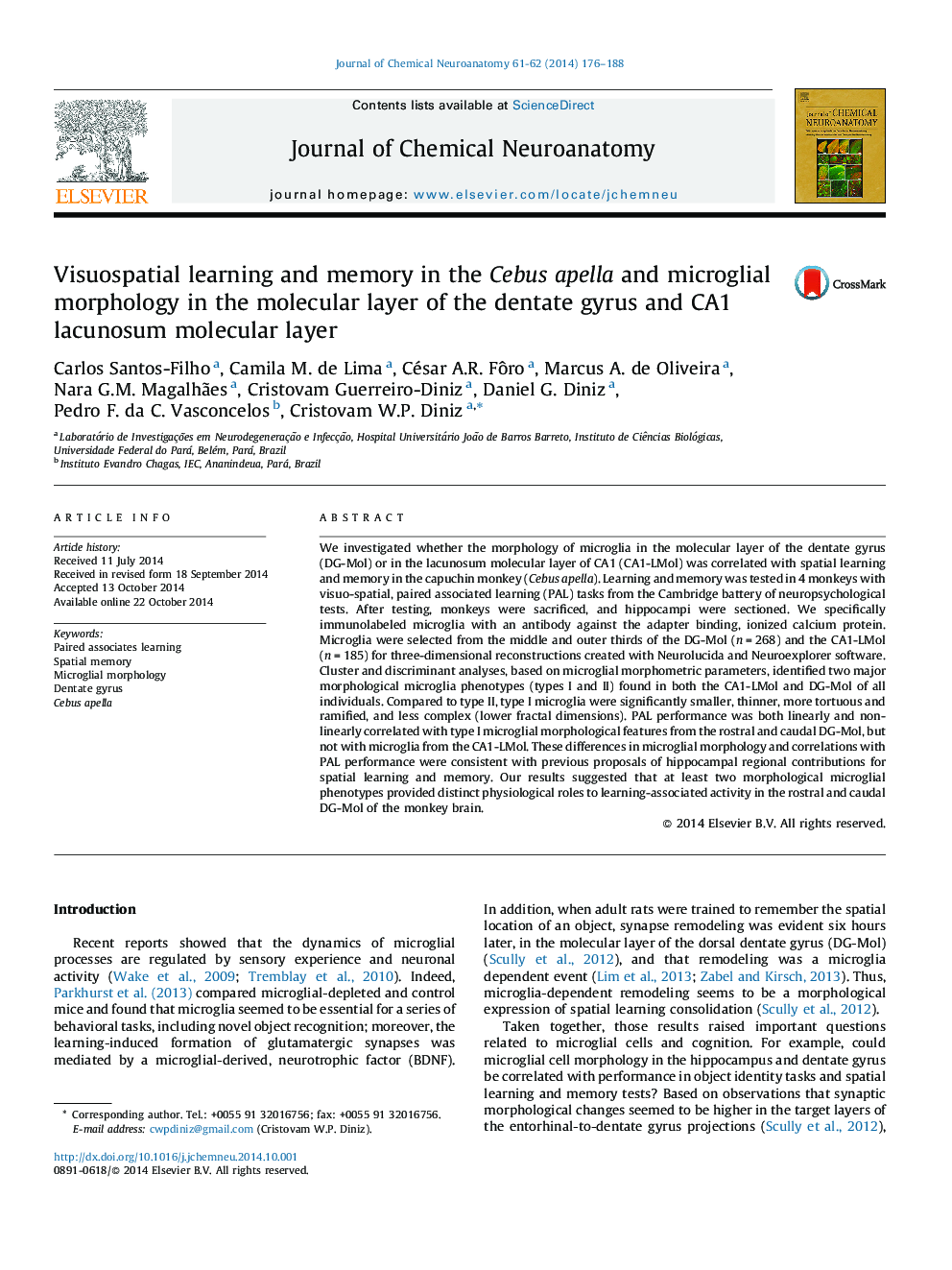| Article ID | Journal | Published Year | Pages | File Type |
|---|---|---|---|---|
| 1988789 | Journal of Chemical Neuroanatomy | 2014 | 13 Pages |
•Three-dimensional morphology of type I microglia from the lacunosum molecular layer is correlated with spatial learning and memory.•Based on cluster and discriminant analysis of microglial morphological features two major phenotypes (types I and II) were identified.•Compared to type II, type I microglia were, on average, smaller, thinner, less tortuous, ramified and less complex.•Paired associates learning task performances were linearly correlated with dentate gyrus type I microglial morphological features.•Morphological microglial phenotypes from rostral dentate gyrus molecular layer may predict performances in learning and spatial memory tasks.
We investigated whether the morphology of microglia in the molecular layer of the dentate gyrus (DG-Mol) or in the lacunosum molecular layer of CA1 (CA1-LMol) was correlated with spatial learning and memory in the capuchin monkey (Cebus apella). Learning and memory was tested in 4 monkeys with visuo-spatial, paired associated learning (PAL) tasks from the Cambridge battery of neuropsychological tests. After testing, monkeys were sacrificed, and hippocampi were sectioned. We specifically immunolabeled microglia with an antibody against the adapter binding, ionized calcium protein. Microglia were selected from the middle and outer thirds of the DG-Mol (n = 268) and the CA1-LMol (n = 185) for three-dimensional reconstructions created with Neurolucida and Neuroexplorer software. Cluster and discriminant analyses, based on microglial morphometric parameters, identified two major morphological microglia phenotypes (types I and II) found in both the CA1-LMol and DG-Mol of all individuals. Compared to type II, type I microglia were significantly smaller, thinner, more tortuous and ramified, and less complex (lower fractal dimensions). PAL performance was both linearly and non-linearly correlated with type I microglial morphological features from the rostral and caudal DG-Mol, but not with microglia from the CA1-LMol. These differences in microglial morphology and correlations with PAL performance were consistent with previous proposals of hippocampal regional contributions for spatial learning and memory. Our results suggested that at least two morphological microglial phenotypes provided distinct physiological roles to learning-associated activity in the rostral and caudal DG-Mol of the monkey brain.
